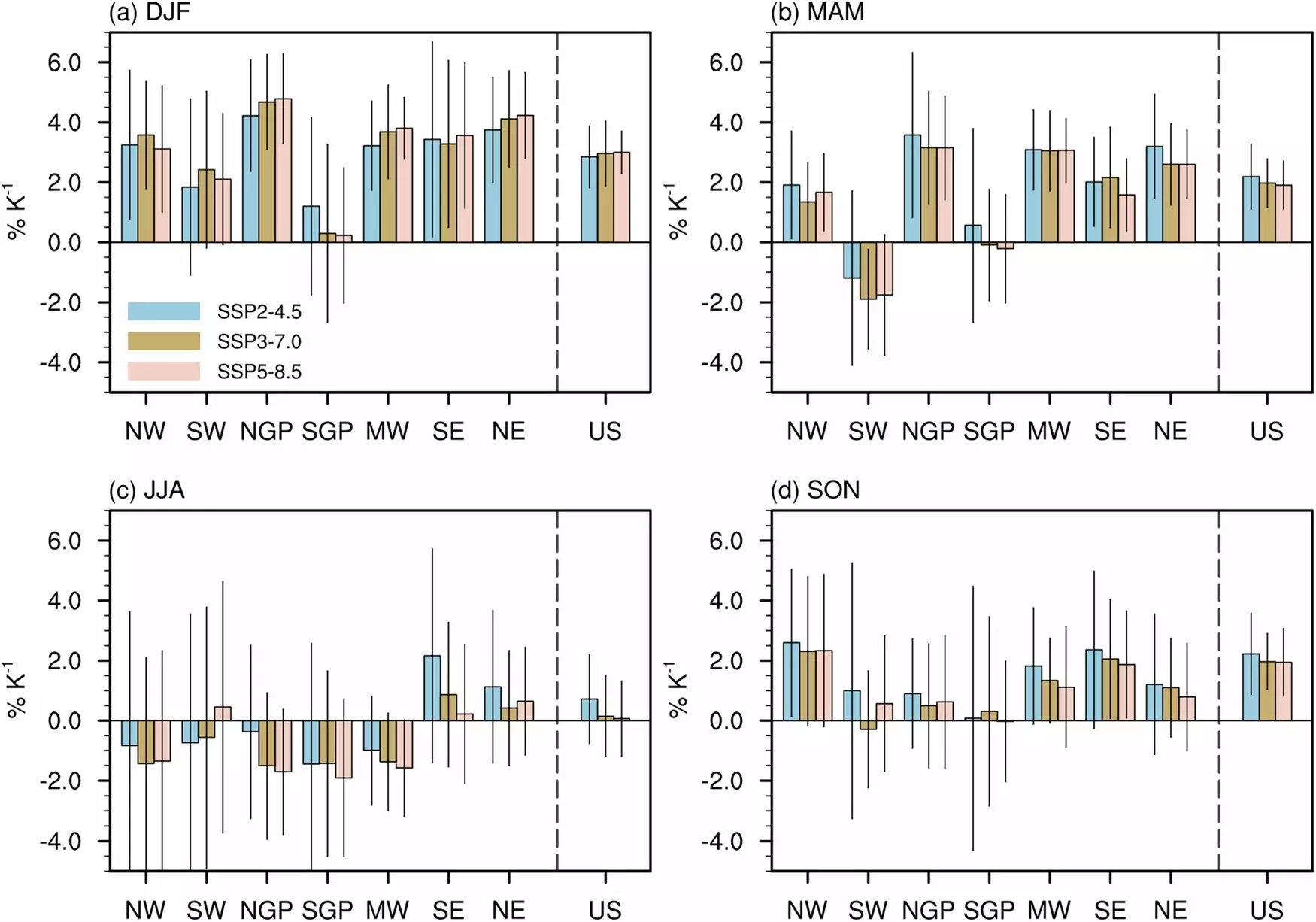In a revealing study, researchers from the University of Illinois Chicago have forecasted significant alterations in winter precipitation across the United States, primarily spurred by global warming. Lead researcher Akintomide Akinsanola and his team utilized advanced climate models to analyze projected shifts by the turn of the 21st century. The findings project an upward trend in overall winter precipitation, signaling that the winters of the future will not only be wetter but will also experience a marked increase in extreme weather events.
As per the study published in *npj Climate and Atmospheric Science*, one of the most concerning elements is the anticipated rise in the frequency of what is termed “very wet” winters. Historically categorized as winters falling within the top 5% for total precipitation in U.S. history, such phenomena could become a regular occurrence, happening as often as once every four years in some regions. This paradigm shift, moving towards rain rather than snow in many areas, could have far-reaching effects on agricultural productivity, water management, flooding risks, and other climate-sensitive sectors.
One compelling aspect of Akinsanola’s research is its assertion of a tangible and robust intensification of winter precipitation, diverging from the more uncertain precipitation trends observed during the summer months and other seasons. Akinsanola articulates that the implications of these changes are not merely speculative; they are backed by a solid foundation of historical data and climate models. Specifically, the study highlights that the mean winter precipitation across the United States could increase by an alarming 2% to 5% for every degree of global warming, with the Northwest and Northeast regions projected to witness the most substantial changes.
Through the use of 19 diverse Earth system models, the researchers mapped out and compared the anticipated precipitation changes by the end of the 21st century (2070-2099) against data from the present day (1985-2014). This comprehensive approach provided them with the ability to dissect regional variances, revealing that while six of the seven designated U.S. subregions would face more frequent extreme winter events, one region — the southern Great Plains (encompassing Texas and Oklahoma) — appeared less affected. In this area, the potential for extreme dry events could overwhelm the projections for wet conditions.
The implications of these projected changes are profound and multifaceted. Akinsanola underscores the need for a paradigm shift in how infrastructure is designed and managed. The anticipated alterations in precipitation patterns necessitate an overhaul of existing drainage systems and building designs to accommodate the expected increases in both mean precipitation and extreme weather events. This action is crucial to mitigate risks associated with flooding and storm damage, which could escalate in intensity and frequency if proactive measures are not implemented.
The impact of reduced snowfall coupled with increased rainfall cannot be underestimated. With diminishing snowpacks, water storage systems that rely on seasonal melts may be strained, revolutionizing the way water resources are managed throughout the country. This dual-stress scenario, where increased rain reduces the quality and quantity of inherently stored winter water, necessitates an urgent reassessment of current water management strategies — especially in regions where agriculture remains a cornerstone of the economy.
Looking beyond the current study, Akinsanola aims to refine predictive models utilizing higher-resolution techniques that delve deeper into localized precipitation patterns, heatwaves, and other extreme conditions. Collaborating with the Environmental Science Division at Argonne National Laboratory, he plans to advance our understanding of how these shifting dynamics interact with existing climate phenomena. As the urgency for effective climate adaptation strategies escalates, Akinsanola’s work exemplifies the critical nature of ongoing scientific inquiry into the evolving climate landscape.
Ultimately, the projected changes in winter precipitation represent not just an environmental challenge but a call to action for policymakers, scientists, and communities alike. The necessity for revised infrastructure, resource management strategies, and community planning is clear, underscoring an immediate need for collaboration and innovation in response to a changing climate.


Leave a Reply